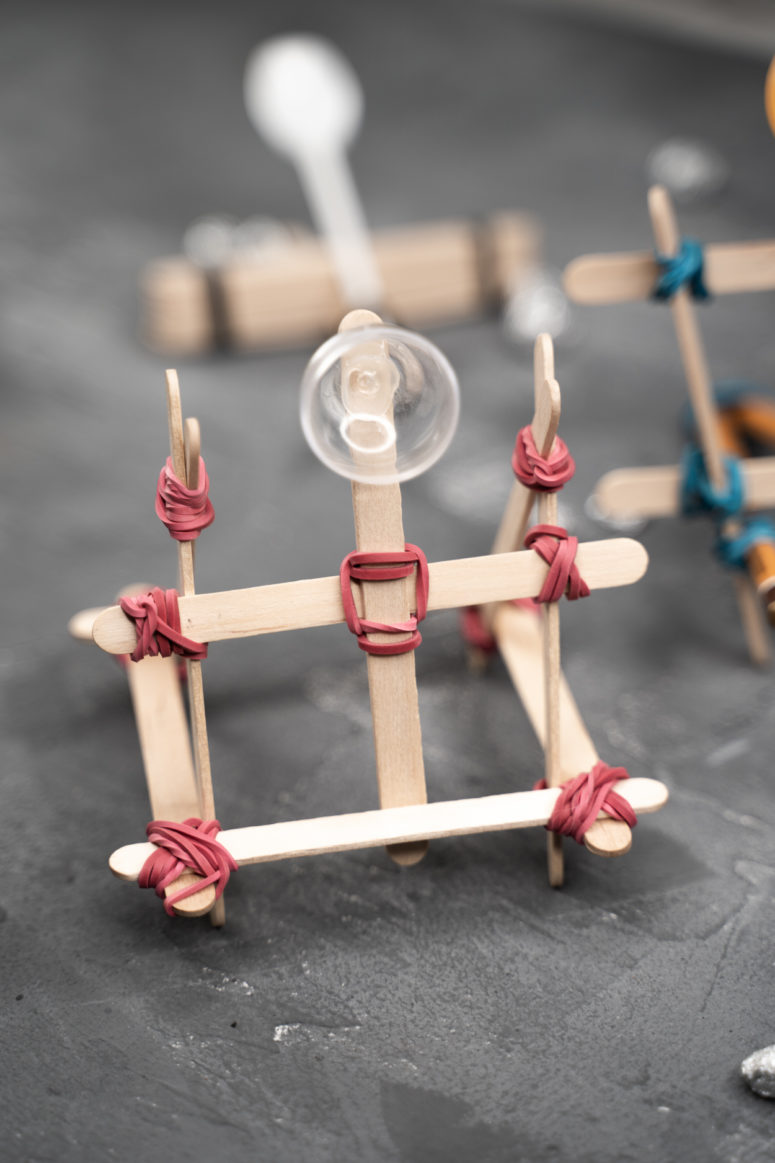

Catapults and conservation of energyĪ lolly stick catapult demonstrates energy being converted from one type to another ( potential to kinetic ) and transferred from one object to another ( catapult arm to the ball ). When you pull down on the catapult arm, elastic potential energy is stored, when you release the catapult arm the potential energy changes to kinetic energy ( energy of motion ) which is transferred to the object which then flies through the air. Newton’s First Law states that an object stays at rest until a force is applied to the object. See who can score the most with a set number of balls. Set a challenge to find out how far you can make a ball travel! Add some mathsĬreate a target with different numbers in different areas and use the lolly stick catapult to fire balls at the target. Investigate to find out if a heavier ball travels further. Try adding extra or fewer sticks to the central part of the catapult. Remember to only change one variable at a time Change the design Popsicle Stick Catapult Investigation Ideas Experiment with your table tennis balls.Attach a milk bottle top using double sided tape or strong glue.Twist another elastic band around the bottom of two sticks as you can see in the photo.Tie an elastic band around the middle of the cross.There should be more lolly sticks on the end you want to use for the milk top. Place another stick above and one below the stack of 7 so they make a cross shape.Twist an elastic band around each end to hold them in place. Start with about seven popsicle sticks and place them on top of each other.
#CATAPULT DIY HOW TO#
Tape measure – optional How to make a lolly stick catapult Popsicle Stick Catapults What you need for a Popsicle Stick Catapult


 0 kommentar(er)
0 kommentar(er)
